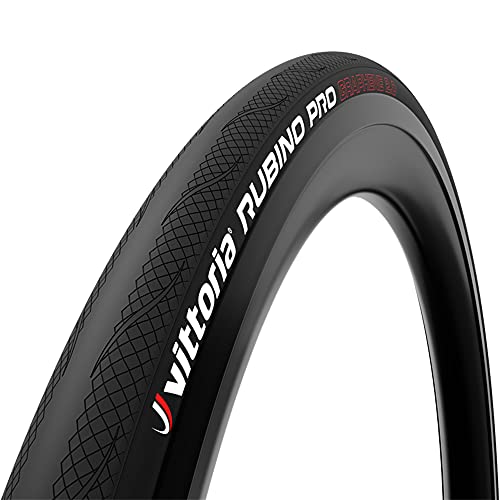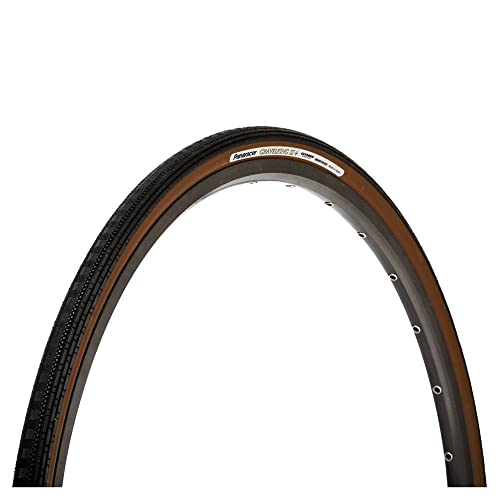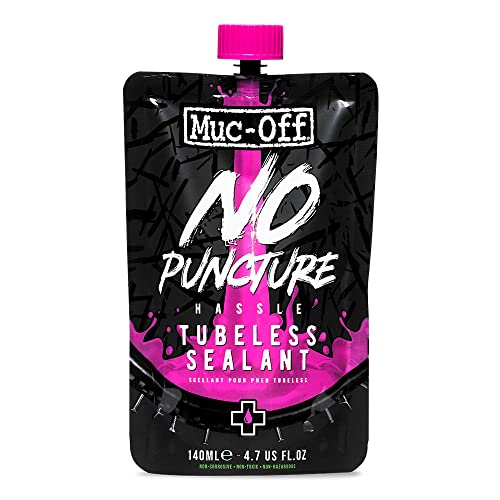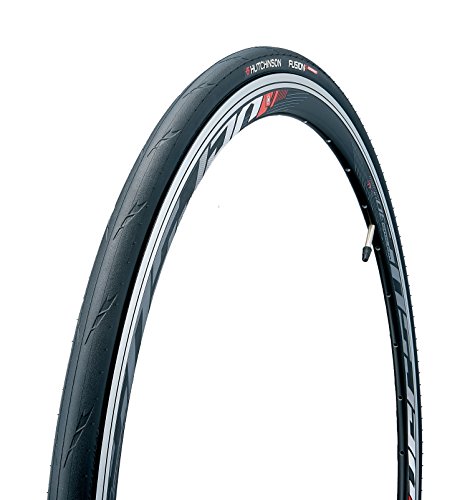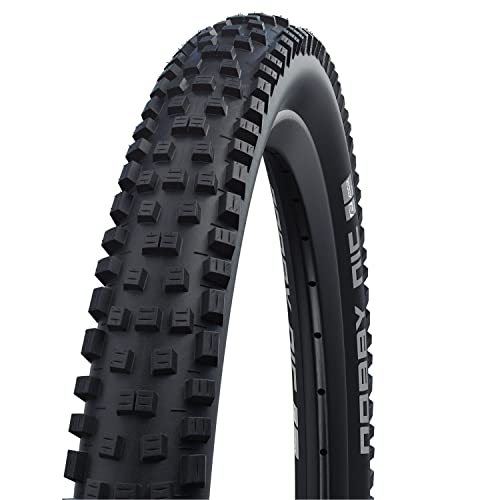This post may contain affiliate links, which help to keep Discerning Cyclist rolling. Learn more.
Tubeless tyres have been around for over a decade for mountain bikes. For road bikes, however, they’re a relatively new option. But are they the best option for your commute?
Some people will swear that tubeless technology is the best invention since…the wheel? Others insist that the cost and the extra kit involved just isn’t worth it. We’ll come to that later.
As with any new cycling technology of course, there are pros and cons. By taking a look at these, we’ll help you decide whether the tubeless experience might be the right one (or the wrong one) for your journey to work.
What Are Tubeless Tyres?
As the name suggests, tubeless tyres are tyres without inner tubes. No surprises there. The air is held within the tyre, unlike tubed tyres that hold the air within (you guessed it) the inner tube.
Tubeless tyres look like conventional tubed clincher tyres, but the beads and rim have a different shape. As with normal tubed tyres, a valve is fitted directly to the rim, through which the tyre is inflated.
How Tubeless Tyres Work
When inflated, the tubeless tyre forms an airtight seal with the rim as the beads snap into position. Tubeless sealant is added through the valve or poured directly into the tyre during installation. This ensures the tyre is leak free and also plugs small punctures when on the move.
Do Tubeless Tyres Need Air?
Tubeless tyres do need air. It’s the air pressure that locks the beads into position and keeps the tyre airtight.
It’s also important to choose the right air pressure for the size of the tyre and road conditions. Tubeless tyres, if set up correctly, can leak less than tubed tyres, but should still be checked regularly. They can also be run at lower pressure than tubed tyres, allowing for a comfier ride.
Can Tubeless Tyres Get Punctured?
Yes they can. But the majority of small tubeless tyre punctures will be fixed by the sealant gel. Many of them you won’t even notice at all.
Let’s face it, all tyres can be punctured, however ‘resistant’ they are. Unless of course you’re sporting the solid steel tyres of the 1860s velocipede, which were certainly puncture resistant. But not very comfortable. They weren’t called ‘bone-shakers’ for nothing.
History of Tubeless Tyres
It’s likely that avid mountain bikers will have been using, and certainly known about tubeless tyres for the past two decades. ‘Tubeless compatible’ is now the default set up for most mountain and gravel bikes.
But in recent years, with evolving innovation and design, tubeless tyres have been used more widely with road bike users too.
When Were Tubeless Tyres Introduced?
Tubeless tyres were first introduced in 1999 by Mavic, the French wheel manufacturer. A collaboration with the two tyre giants Michelin and Hutchinson, led to the creation of the first UST (Universal System Tubeless) rim.
Rolling forward to 2006, the first tubeless tyres for road bikes were released by Shimano and Hutchinson, with other major brands following suit a few years later. Nowadays, tubeless options are offered by virtually all tyre manufacturers.
When Did Tubeless Tyres Become Popular?
Initially popular with mountain bikers, tubeless tyres have been gaining in popularity with road users over the past decade. In more recent years they’ve been catching on, albeit it fairly slowly, as a commuter tyre.
Tubeless Tyres vs Tubed Tyres
| Tubeless Tyres | Tubed Tyres |
| Setup: Rim and tyre + sealant | Setup: Rim, tyre and inner tube |
| Lighter weight | Heavier weight |
| Lower rolling resistance | Higher rolling resistance |
| More expensive | Less expensive |
Are Tubeless Tyres Better Than Tubed Tyres?
There’s no exact and easy answer to this. If you’re looking for a comfortable ride with less punctures, then yes. For commuting speed and easy maintenance, probably not.
But it’s worth looking more specifically at the pros and cons in order to decide whether tubeless tyres are suitable for your commute.
Tubeless Tyres Pros + Cons
| Tubeless Tyres Pros | Tubeless Tyres Cons |
| Fewer penetration punctures. Most small punctures will be repaired by the sealant gelTyre fitting is more difficult and takes longerNo pinch flats (there’s no inner tube to pinch)More maintenance. Sealant needs topping up approximately every six months. Sealant can also clog the valve, which needs regular cleaning | |
| Better traction. Lower tyre pressures means a smoother ride on rough surfaces | For irreparable punctures on the road, you need to carry a spare inner tube |
| Riding with lower PSI also improves performance in rain, snow and ice, and on steep hills | More kit to carry. This can include sealant, tubeless tyre plugs, sewing kit, high volume pump and inner tube, which adds weight to the ride |
| Lower rolling resistance can mean increased speed (but with many variables to consider, this isn’t always the case) | More mess. Sealant is sticky and hard to clean |
| More expensive. Tubeless tyres and rims cost more. Conversion from a tubed setup to tubeless is also costly |
Tubeless Tyres FAQs
There are a number of things to consider before deciding whether (or not) to make the switch to tubeless tyres. To help you, we’ve answered some of the most burning questions.
Are Tubeless Tyres the Same as Run Flats?
No. Run flats are foam inserts for tubeless tyres that protect against serious punctures. When tyre pressure is lost, the foam expands, enabling you to continue riding with the equivalent of around 30 PSI.
Are Tubeless Tyres Heavier?
It depends on the setup. Tubeless tyres can sometimes be heavier, but there’s the obvious weight saved by the lack of inner tube. However, with the weight of the sealant, rim tape (if used) and tubeless valve, the difference may not be significant for those commuting.
Are Tubeless Tyres Faster?
On a road commute, tubeless tyres won’t speed up your journey. In spite of lower rolling resistance, adding sealant to a tyre will slow it down, as will lower pressure.
Can Tubeless Tyres Be Repaired?
Yes they can. Many small punctures will be plugged by the sealant. For larger punctures you can use tubeless rubber tyre plugs or fabric plugs, inserted into the hole. Larger tears and cuts can be sewn together without removing the tyre.
Essentially, the ease of the repair depends on the size and severity of the puncture. If it is necessary to remove the tyre, you’ll need a high volume pump and plenty of strength.
Are Tubeless Tyres Worth It?
With better traction and less punctures, tubeless tyres are a clear favourite for mountain bikers. For road users however, the extra maintenance and difficult installation might outweigh the advantages.
Tubeless tyres are certainly easier to deal with now than in the first years of their release, but you should still be prepared for more faff, and more mess.
- Made of high quality material
- Excellent level of reliability and longevity
- Weight: 250g
- The GravelKing SK series features tread blocks specifically designed to generate peak performance on gravel and loose roads.
- Tubeless Compatible (up to 60psi).
- AX-Alpha - Advanced Alpha Extra Cord.
- GOING TUBELESS: A super lightweight tubeless sealant that stops punctures in their tracks, our tyre sealant is compatible with all tubeless ready and full UST wheels and tyres It’s perfect for...
- SEALS UP TO 6MM: This badass sealant contains cutting-edge molecules that will seal tears and holes up to 6mm so that you can laugh in the face of punctures. It also seals porous tyres and bead/rim...
- LONG-LASTING: Our tyre sealant for bikes is engineered for maximum performance. One application will last up to six months in temperate climates and won’t ball up. This nifty non-corrosive formula...
- The tire for racers eager for speed and performance.
- Eleven Storm compound concept for top performance .
- From 180g, it offers exceptional road holding.
- Modello NOBBY NIC prodotto copertura diametro 29 larghezza 2,40 colore nero modalità MTB camera tubeless anello flessibile ETRTO misura 29 x 2,40
- Modello NOBBY NIC prodotto copertura diametro 29 larghezza 2.4 colore nero modalità MTB camera tubeless anello flessibile ETRTO misura 29 x 2.4
- Prodotto realizzato con materiali di alta qualità
Are Tubeless Tyres Good for Commuting?
If you’re commuting on uneven or gravelly terrain, then tubeless could be a good option. The lower tyre pressure offers comfort, along with safety on wet or icy roads in all-weather commuting. And of course, you’ll have less punctures.
But weighing things up, the advantages of using tubeless tyres for commuting may not justify the extra expense, gear and difficulties involved.
The tubed option is undoubtedly less maintenance. And if punctures are your concern? They can be kept to a minimum by using good puncture-resistant tyres, or even putting sealant in your inner tubes.
I for one will be sticking with those inner tubes, at least for now.
